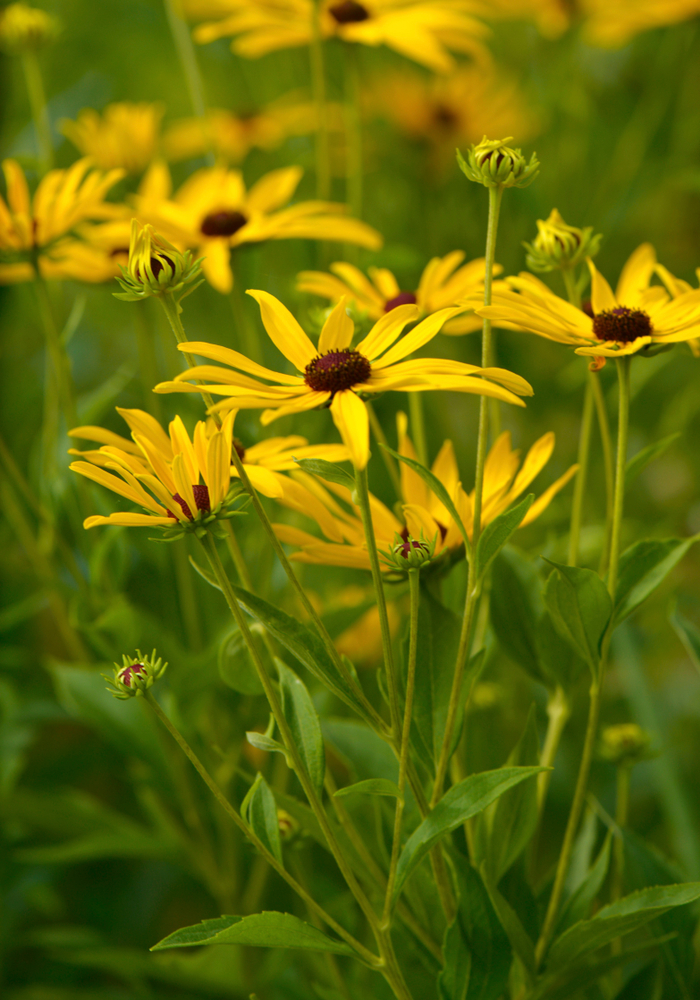Description
Rudbeckia is a genus of flowering plants in the Asteraceae family, commonly known as coneflowers or black-eyed Susans. This genus includes both annual and perennial species that are known for their showy and daisy-like flowers. Rudbeckia plants are valued for their vibrant colours, long blooming period, and their ability to attract pollinators.
Climate: Rudbeckia plants are native to North America and are adaptable to a wide range of climates. Most species thrive in regions with a temperate climate, though some are well-suited for hotter or cooler climates. They are generally hardy and can tolerate a variety of weather conditions, including both heat and cold.
Watering: Rudbeckia plants have moderate water needs. They prefer consistently moist soil but are also somewhat drought-tolerant once established. Water them regularly, especially during dry periods, to keep the soil evenly moist. However, be cautious not to overwater, as excessive moisture can lead to root rot.
Soil Type: Rudbeckia plants prefer well-draining soil with a slightly acidic to neutral pH. They can adapt to various soil types, including loam, clay, or sandy soil. However, they perform best in fertile soil that is rich in organic matter. Good drainage is important to prevent waterlogging.
Fertilizing: Rudbeckia plants are generally low-maintenance and do not require heavy fertilization. Incorporating organic matter, such as compost, into the soil during planting provides sufficient nutrients. If the soil is poor, a balanced slow-release fertilizer can be applied in spring to support healthy growth.
Pest & Diseases: Rudbeckia plants are relatively resistant to pests and diseases. However, they can occasionally be affected by common garden pests like aphids or leafhoppers. Regular inspection and appropriate pest control measures can help manage these issues. Rudbeckia plants are also generally resistant to most diseases.
Pruning: Rudbeckia plants do not require extensive pruning. However, deadheading or removing faded flowers can encourage prolonged blooming. Trimming back any diseased or damaged foliage can also help maintain plant health and appearance. In late winter or early spring, cutting back the plants to a few inches above the ground can promote vigorous growth.
Propagation: Rudbeckia plants can be propagated from seeds or through division. Sow the seeds directly in the garden or start them indoors. Division is best done in spring or early autumn, as the plants are emerging or going dormant. This method allows for the creation of new plants from mature clumps.
Landscape Uses: Rudbeckia plants are versatile and can be used in various landscape settings. They are commonly used in borders, cottage gardens, meadows, or as cut flowers. They also attract butterflies and other pollinators, making them suitable for wildlife gardens. Additionally, some species, like Rudbeckia hirta, are well-suited for mass plantings and naturalized areas.


